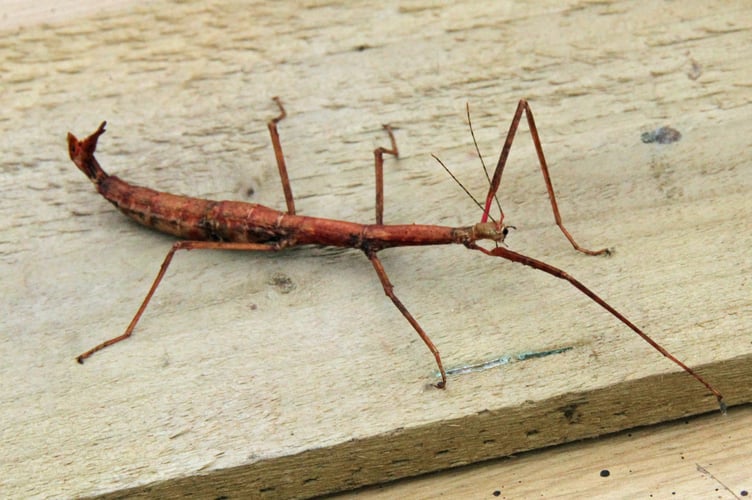We went to Draynes Woods for another fungus foray down beside the River Fowey and I was delighted to see several common earth–balls growing on the ground beside trees and along the edges of some streams that run into the Fowey.
These are sometimes mistaken for puff–balls but have a tough looking brown scaly skin and lack the very short, thick ‘stem’ of the puff–ball. Sometimes during wet weather a walker will spot one of these mature balls that has split open and when a large raindrop lands on it a small puff of spores will be ejected just like a puff of smoke.
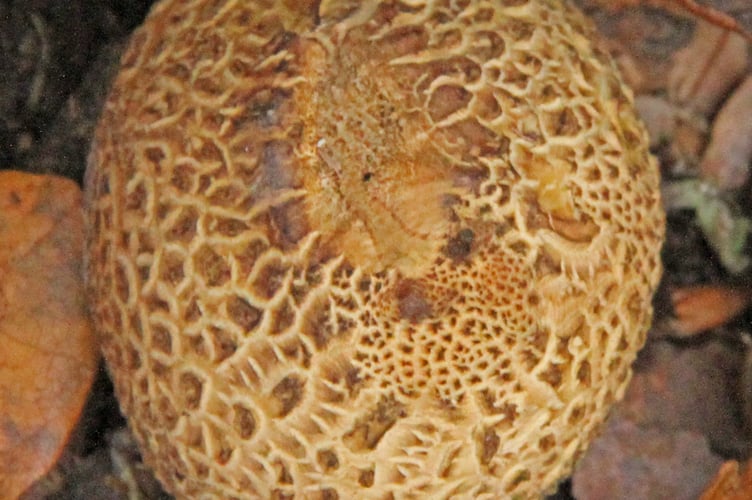
Shaggy pholiota mushrooms were also evident in dense clusters alongside the stream. These are brown with upturned scales on their long stems and caps that can grow to 10cm - if not devoured by slugs. These are probably the prettiest member of the Pholiota family and also the commonest.
I found a solitary scarlet elf cup growing on some buried dead wood among some weeds. They are common in the west of England and are so named, as it is said that elves and fairies used them for drinking vessels although, I must admit, that I have never seen an elf anywhere near an elf cup.
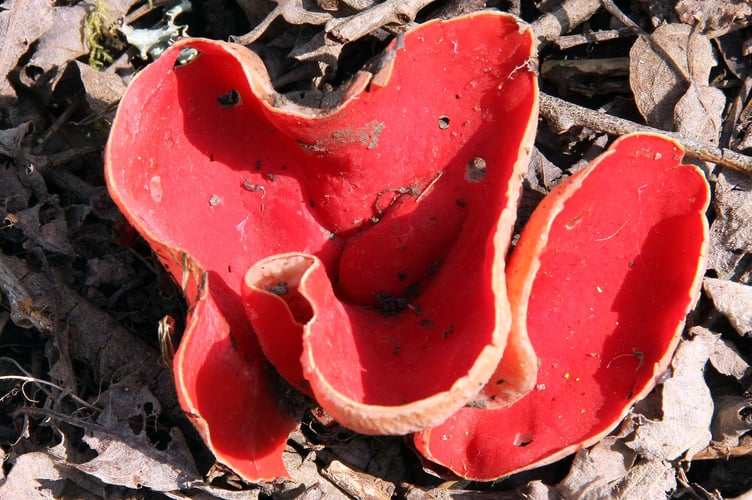
I was quite puzzled when I spotted a dark grey, almost black mushroom growing on a small patch of grass beside one of the trails through the woods, it looked as if its cap had been twisted around like an old screwed up piece of paper. After searching through my mushroom books I found that it was a black helvella. I had never seen this one before but apparently, according to Roger Phillips’ book Mushrooms, they are frequently seen in woods.
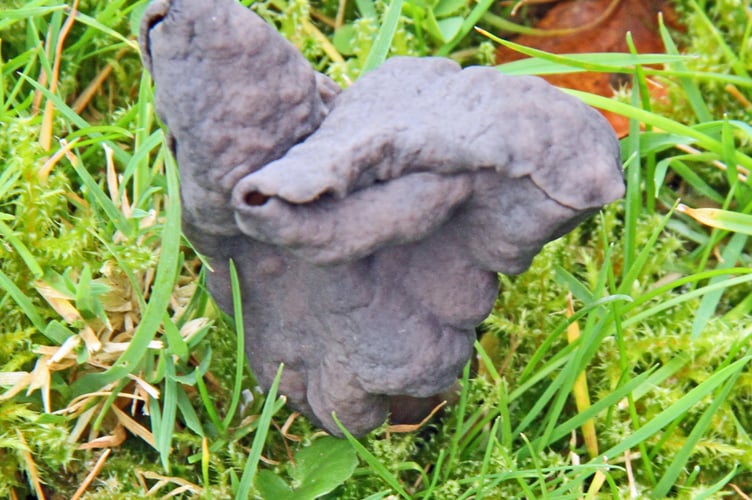
Growing on an oak tree away from the river was a bright red beefsteak mushroom. This is a so called bracket fungus, as it grows on a tree trunk and looks like a bracket or shelf attached to the tree from which the get their nutrition.
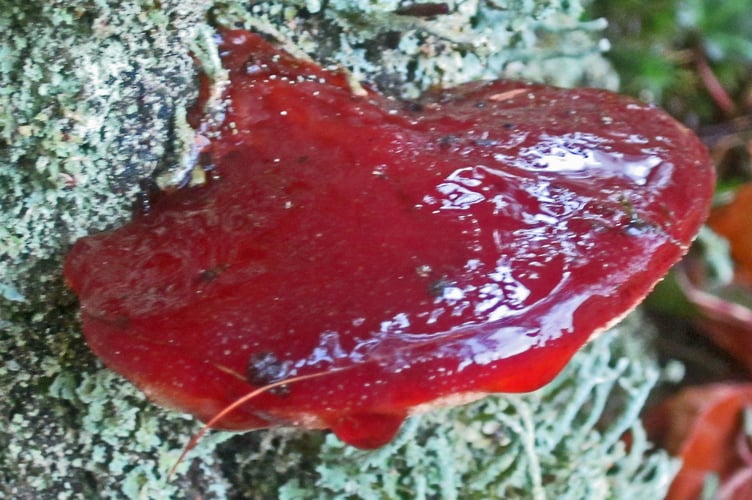
They can reach a width of 30cm or twelve inches and this one stood out well and was easy to spot, in fact, when hunting for mushrooms in woodland your eyes must be on the trees as well as on the ground. Although the one I spotted was on an oak tree, they sometimes favour chestnut and willow, but their presence has a destructive effect on its host, and I hasten to add, they can grow four to five metres up the trunk which makes them very difficult to photograph.
We saw a couple of squirrels foraging among the leaves beneath an oak tree but as I was sizing them up for a picture, a large black dog galloped into the clearing making the two greys leap to the nearest tree trunk to escape. There was a robin sitting on a low branch that watched the episode quite unconcerned as if it were a regular occurrence, despite there being several notices saying that dogs must be kept under strict control on leads.

One thing I noticed in the woods, despite there being several information boards, I didn’t read on any of them that a king had died in the river. There must be thousands of visitors that walk down to Golitha Falls every year who are unaware that King Doniert, supposedly the last king of Cornwall, drowned there in the river in the year 875.
After we arrived home, I went to the garden shed to pick up some logs for the fire and found a stick insect on the bench. It was a nice big one, about 11cm or a good four inches from head to tail and was quite fat. As the door is always open during the day I suppose it came in for a look around. It had gone when I closed the door in the evening. Some years ago I saw one in the village down by St Hughs Church, but it was not so large and only had five legs. Now, the thing with these giant insects is that if they lose a leg, they have the ability to grow a new one.
